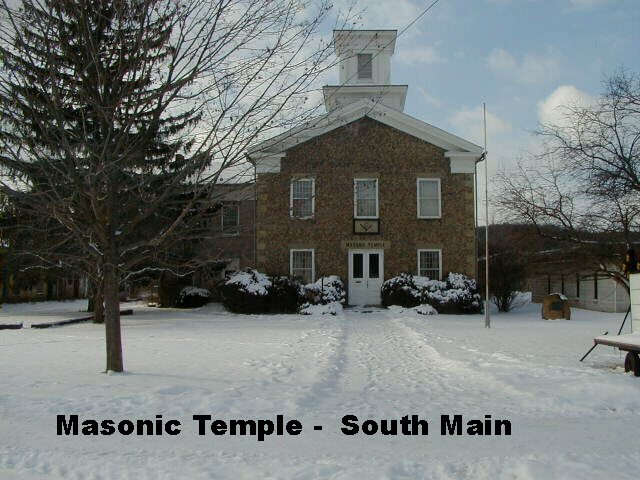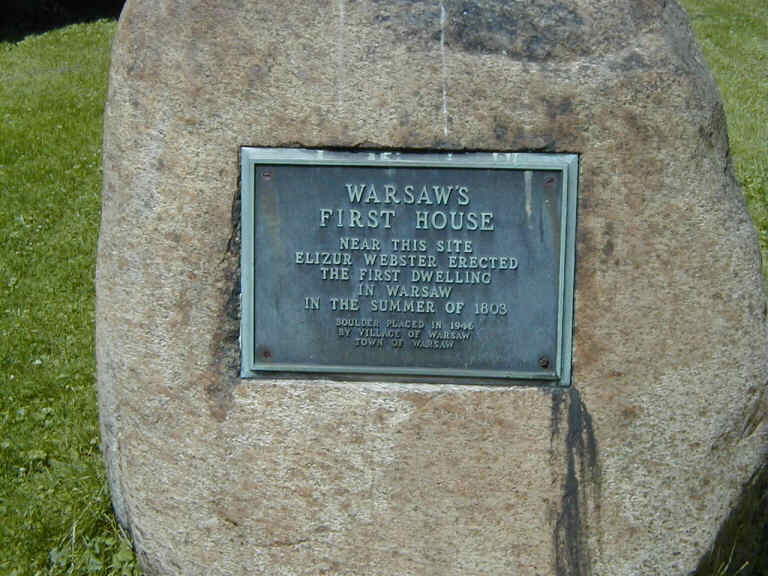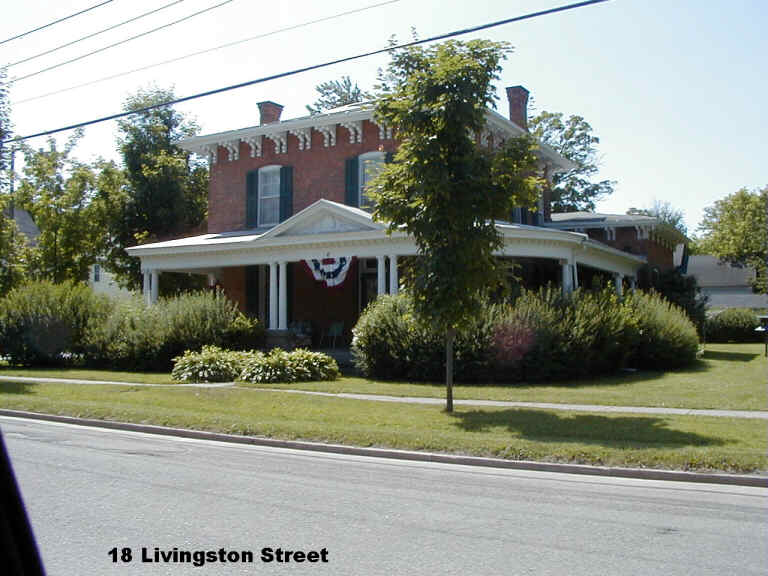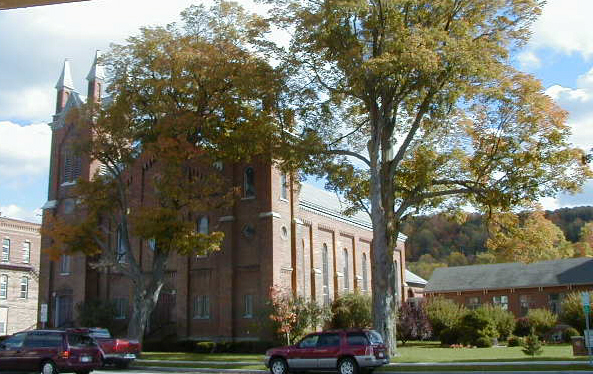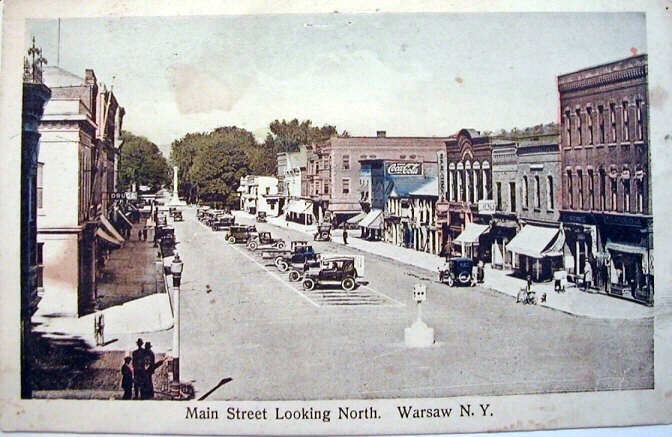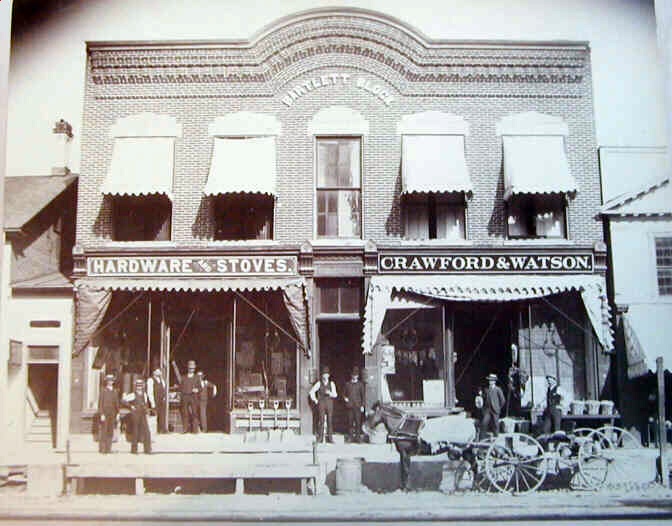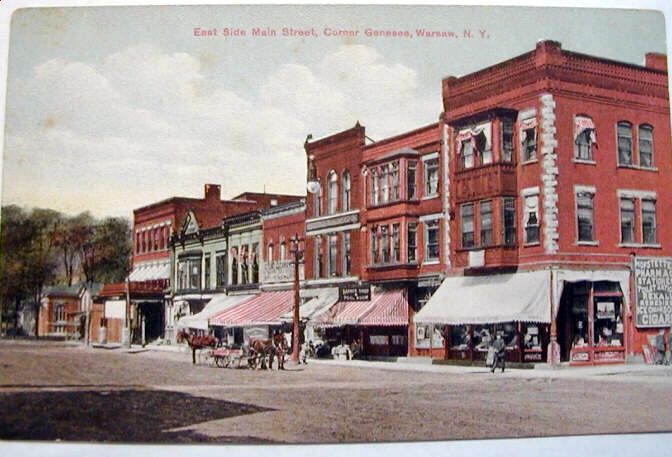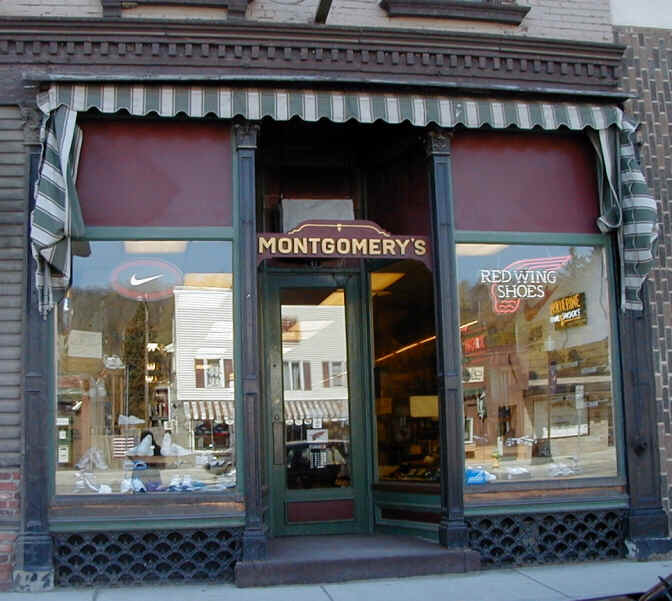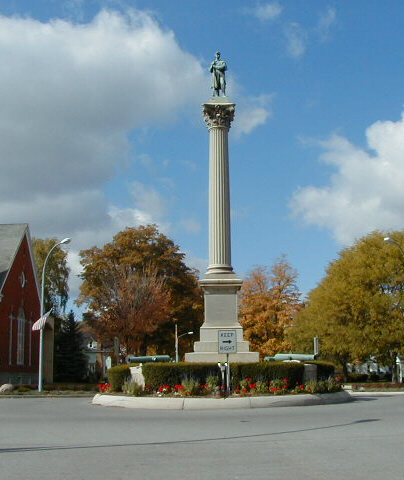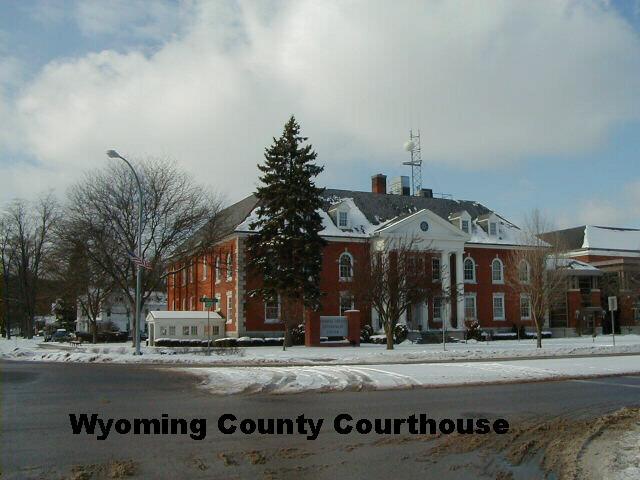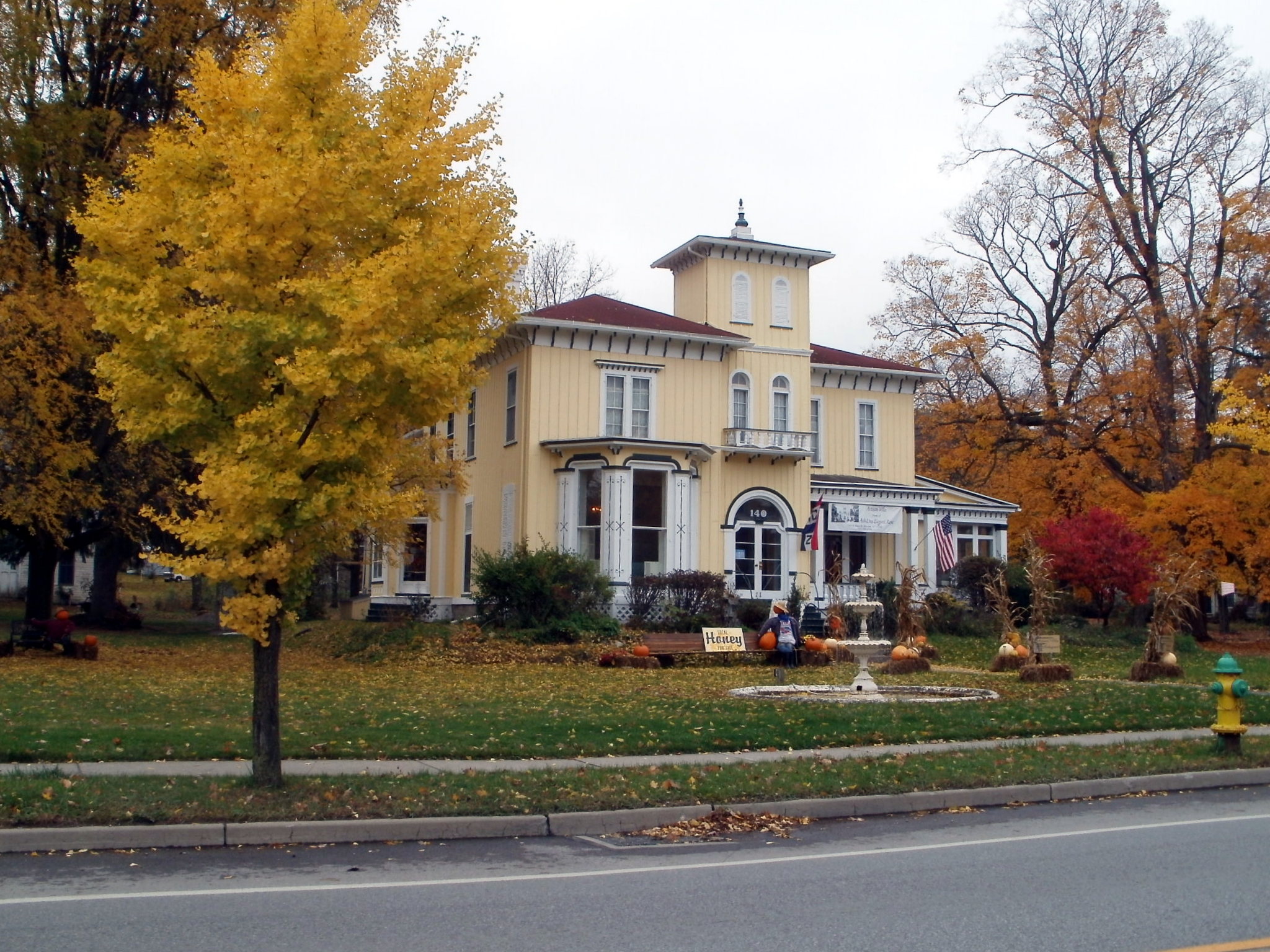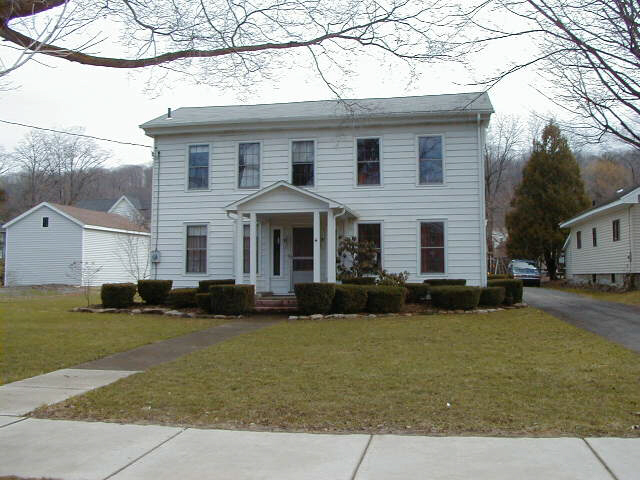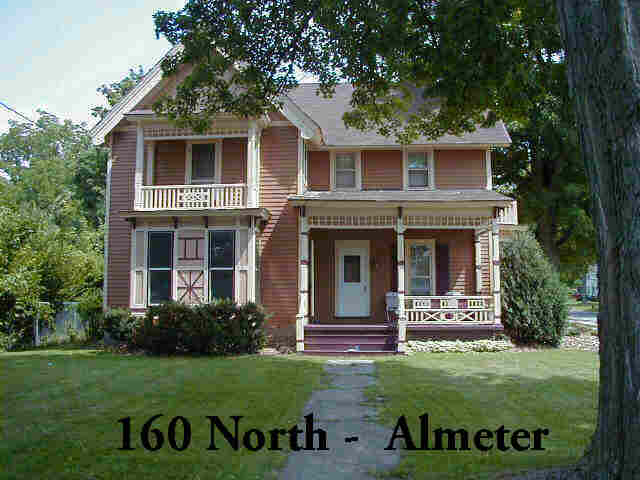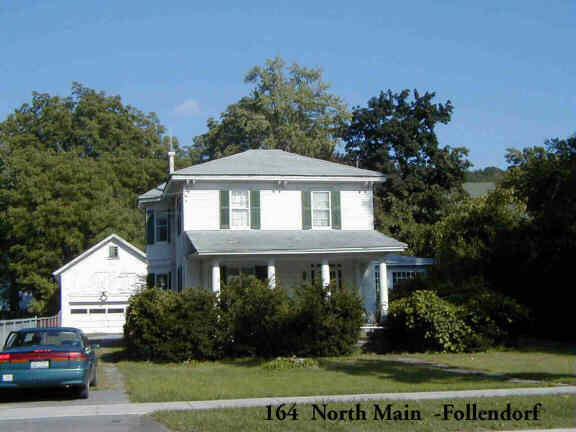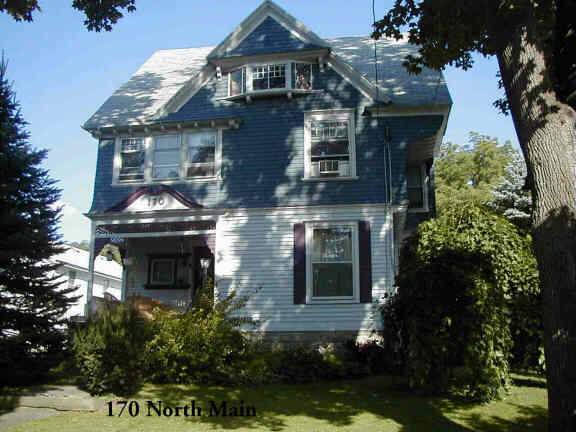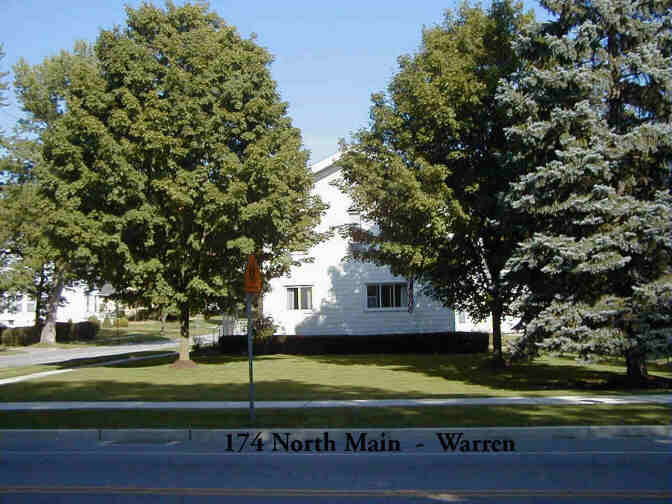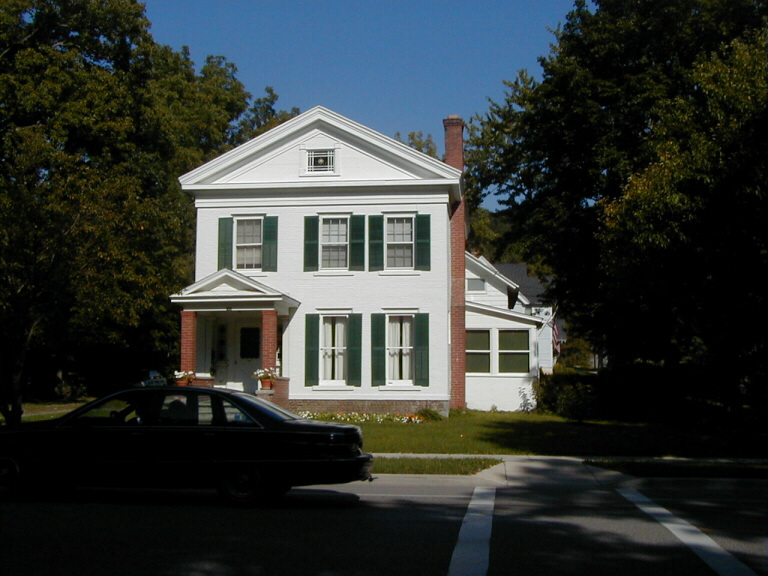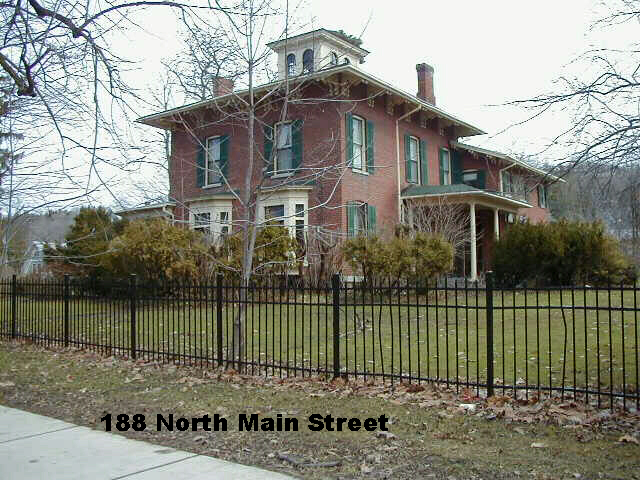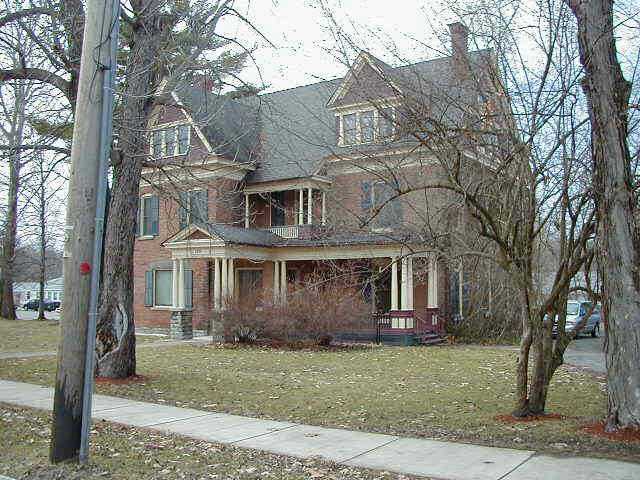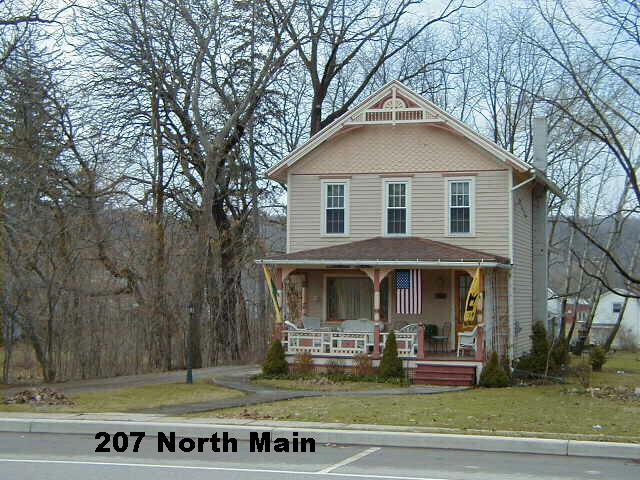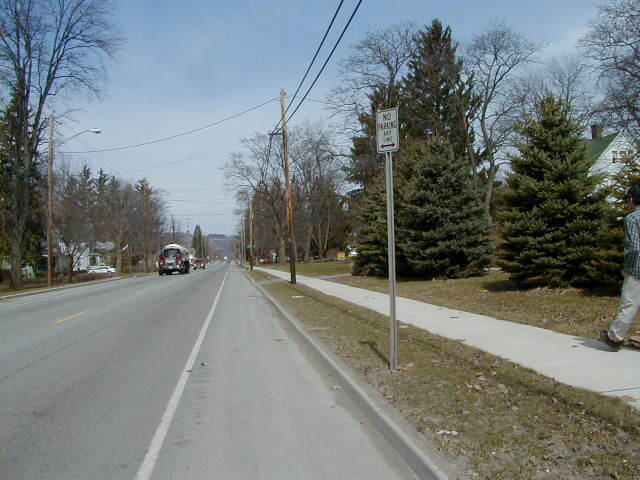Southwest Corner of South Main and Jefferson StreetsThe house on the Southwest corner is an example of Victorian style architecture. Note the decorative detailing on the porches, the siding, and the overall asymmetry.
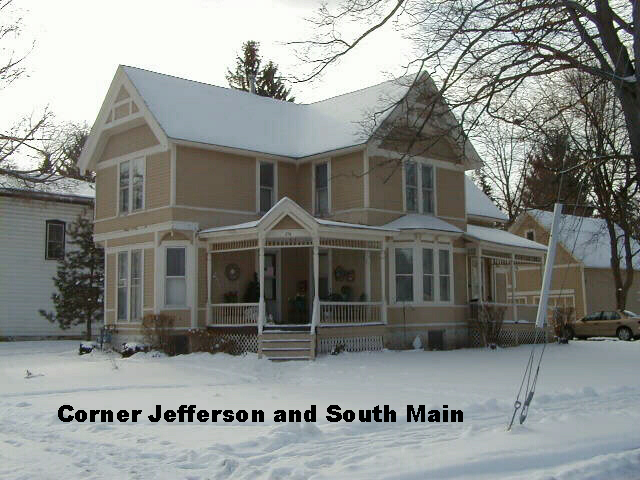
Northwest Corner of South Main and Jefferson StreetsThe house on the northwest corner reveals Greek Revival details under modern renovations. See especially the use of a temple-style porch and the wide entablature. As you proceed North on Main Street, you will see many houses with a wide band of trim emphasizing the cornice. This may be the only surviving Greek Revival trim on some of the houses that have been remodeled and covered with modern siding materials.
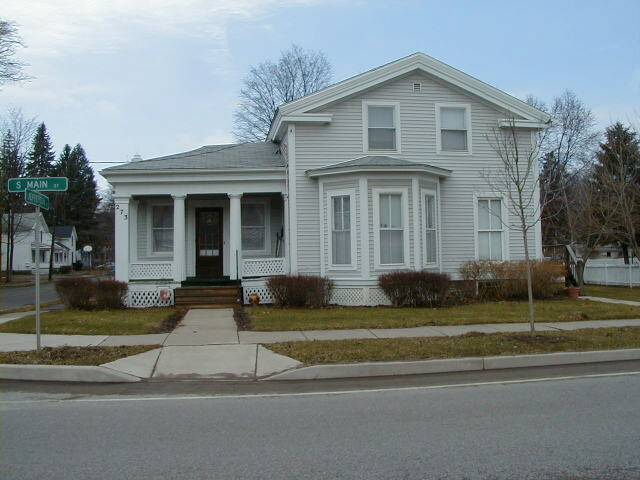
Going North on South Main StreetAs you continue down the street, you will see many houses with Victorian detailing such as porches with columns, bay windows and decorative siding.
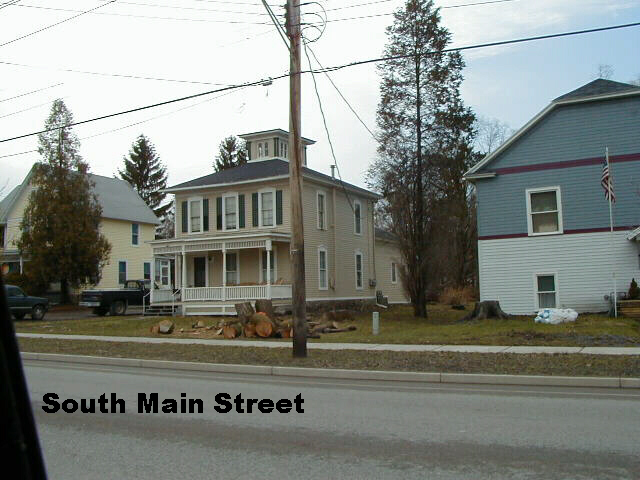
Common Styles on Main StreetAnother common style in Warsaw is the Italianate, or bracketed house. This style was especially common in the 1840s to 1870s. The principal shape of the building is square, often with a cupola on the top. The roof overhang is large and there are prominent brackets under the roof.
Pictured is the old Warsaw Grange built around the turn of the century.
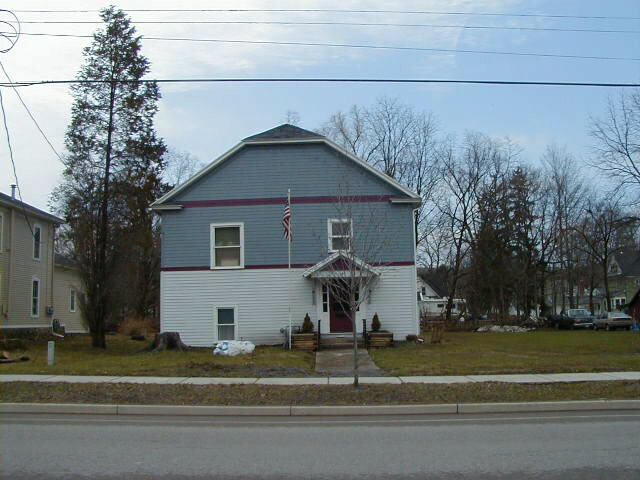
North Main and Allen StreetsAt the corner of Main and Allen Streets, you will see a 2002 change to what was an old abandoned industrial facility. This had been the site of the Warsaw Elevator Company and other industrial enterprises.

235 North Main StreetThis house has a number of features combining different styles. The mansard roof is a later addition from the Second Empire style popular between 1860 to 1885, added to an earlier structure.
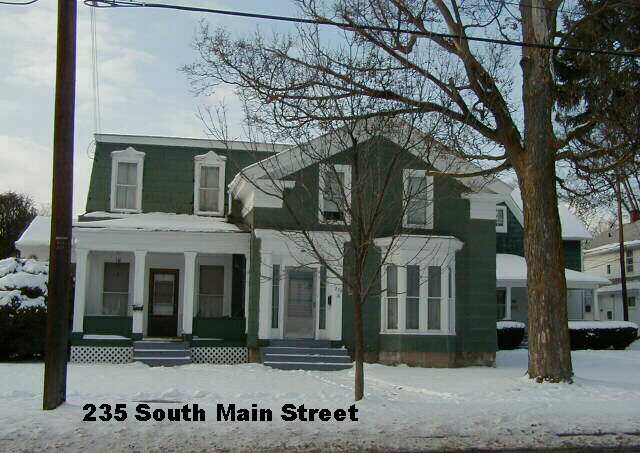
73 South Main StreetThis is the only cobblestone structure in the village. It is a Greek Revival public building that served as a school for Warsaw from 1846 until 1873. Chester Hurd built the Warsaw Academy, as a story is told, from stones supplied by local boys from the East Hill for the price of a circus ticket. The cobbles range from one-half to two inches in height and from two to four inches in length. The cobble-stones are laid five to a quoin. Warsaw voters authorized $1,500 for its construction including windows six lights wide and three lights high.
The masons assumed responsibility for the structure in 1907.
A boulder on the front lawn commemorates Elizur Webster's first house, a log cabin, which stood in the general area.
